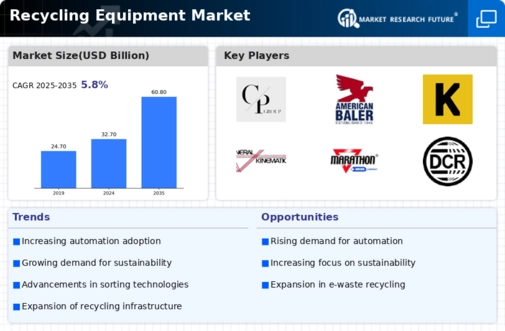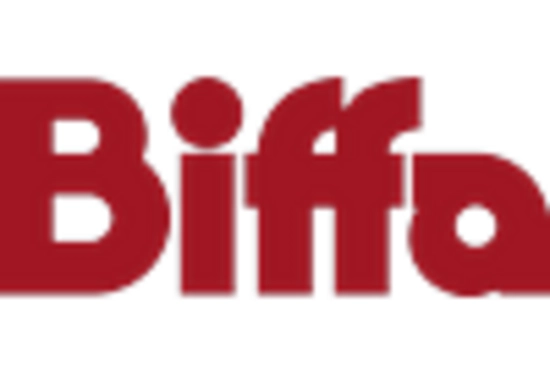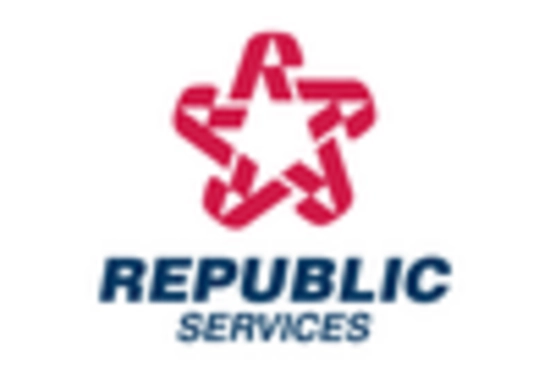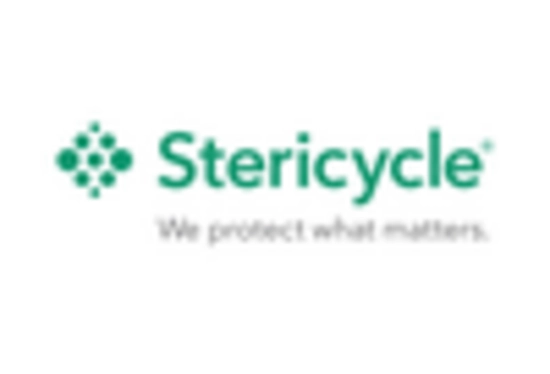Technological Innovations
Technological advancements are revolutionizing the Recycling Equipment Market. Innovations such as artificial intelligence, automation, and advanced sorting technologies are enhancing the efficiency and effectiveness of recycling processes. For instance, AI-driven sorting systems can significantly improve material recovery rates, which are crucial for the sustainability of recycling operations. The market for recycling equipment is expected to grow at a compound annual growth rate of 7% from 2025 to 2030, driven by these technological improvements. As equipment becomes more sophisticated, the Recycling Equipment Market is likely to attract new investments and expand its capabilities.
Growing Environmental Concerns
The increasing awareness of environmental issues is driving the Recycling Equipment Market. As societies grapple with the consequences of waste accumulation and pollution, there is a heightened demand for effective recycling solutions. This trend is reflected in the rising investments in recycling technologies, which are projected to reach USD 50 billion by 2026. Governments and organizations are prioritizing sustainability, leading to the development of advanced recycling equipment that can process a wider range of materials. The Recycling Equipment Market is thus positioned to benefit from this shift towards eco-friendly practices, as both public and private sectors seek to mitigate their environmental impact.
Government Regulations and Policies
Regulatory frameworks play a crucial role in shaping the Recycling Equipment Market. Governments worldwide are implementing stringent regulations aimed at reducing waste and promoting recycling. For instance, many countries have set ambitious recycling targets, which necessitate the adoption of advanced recycling technologies. The European Union's Circular Economy Action Plan, for example, aims to ensure that all packaging is recyclable by 2030. Such policies create a favorable environment for the Recycling Equipment Market, as manufacturers and service providers align their offerings with regulatory requirements. This alignment not only fosters innovation but also enhances market growth opportunities.
Rising Demand for Recycled Materials
The demand for recycled materials is on the rise, significantly impacting the Recycling Equipment Market. Industries such as construction, automotive, and packaging are increasingly utilizing recycled materials to meet sustainability goals and reduce costs. For example, the construction sector is projected to use 30% more recycled materials by 2027, creating a robust market for recycling equipment. This trend not only supports the circular economy but also drives the need for advanced recycling technologies that can efficiently process various materials. Consequently, the Recycling Equipment Market is poised for growth as it adapts to meet this escalating demand.
Increased Investment in Waste Management Infrastructure
Investment in waste management infrastructure is a key driver for the Recycling Equipment Market. As urbanization accelerates, cities are recognizing the need for efficient waste management systems to handle increasing waste volumes. Governments and private entities are allocating substantial funds to enhance recycling facilities and equipment. For instance, investments in recycling infrastructure are expected to exceed USD 30 billion by 2028. This influx of capital is likely to spur innovation and improve the overall efficiency of recycling operations. As a result, the Recycling Equipment Market stands to benefit from these developments, positioning itself as a vital component of sustainable waste management.


















Leave a Comment